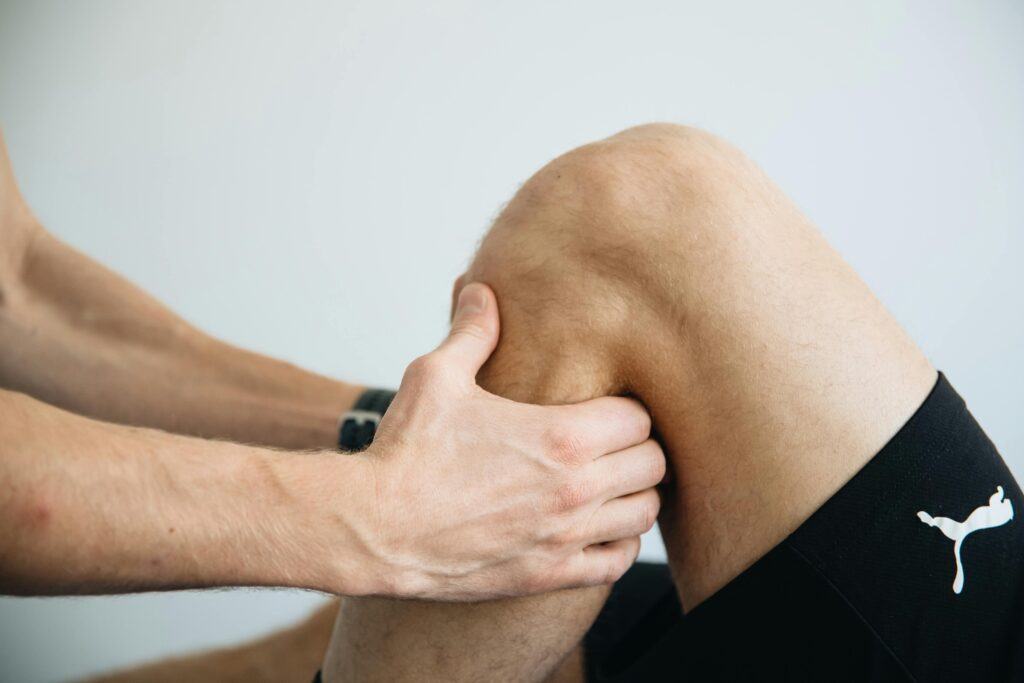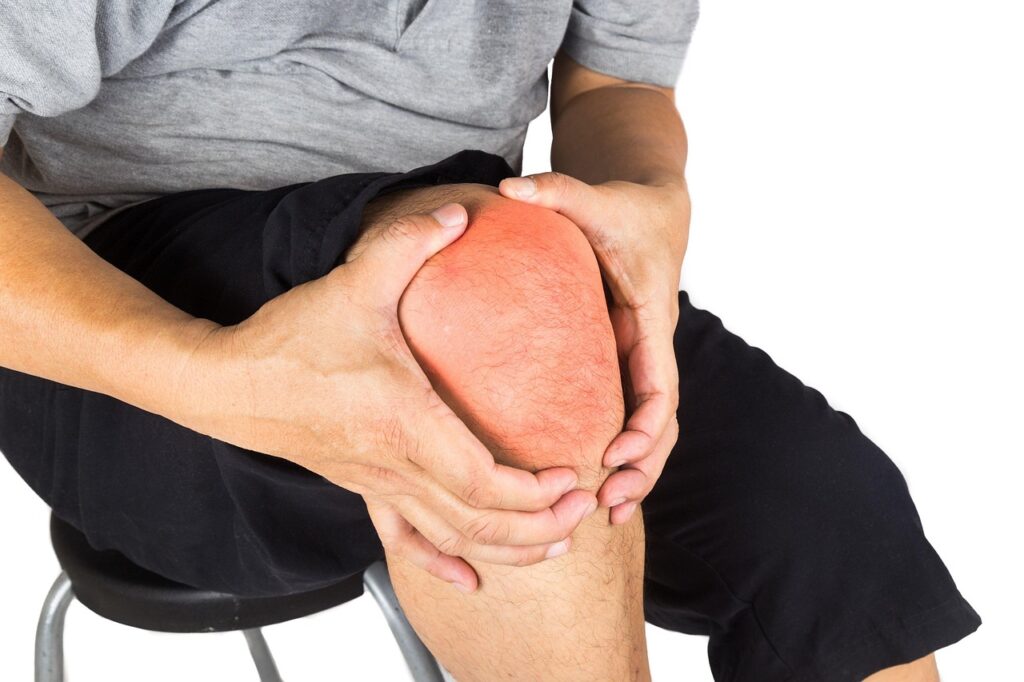What Is Ankle Pain?
Ankle pain is more than just a nuisance—it’s a signal from your body that something is wrong. Whether the cause is a minor sprain from stepping off a curb the wrong way or chronic pain that turns every step into a chore, ankle pain can limit everyday activity, exercise, and even sleep. It’s most often caused by injury, illness, or overuse, and determining the cause is the initial step towards relief.

Common Causes of Ankle Pain
Sprained Ankle
This is the most typical cause of ankle pain. If your foot twists in an unusual manner, it may stretch or rip the ligaments, which leads to pain, swelling, and bruising.
- Mild sprains may be managed with rest alone.
- Physical therapy, or even surgery, may be needed for severe sprains.
Fractures
Breaking any of the three bones that make up your ankle—tibia, fibula, or talus—can lead to excruciating pain, swelling, and difficulty walking. Fractures must be treated right away, occasionally with casting or surgery.
Achilles Tendon Injuries
Your Achilles tendon is a thick band that connects your calf muscles to your heel. Injuries like tendonitis or a rupture can cause swelling, tenderness, and an abrupt pain in the rear of the ankle.
Arthritis
Both osteoarthritis and rheumatoid arthritis can affect the ankle joint, causing chronic pain and stiffness. Both are degenerative conditions and tend to worsen over time.
Tarsal Tunnel Syndrome
Just like carpal tunnel in your wrist, this happens when the posterior tibial nerve is compressed, causing tingling, burning, or pain in the foot and ankle.
Symptoms to Look Out For
It’s not just pain. Look for other red flags that could indicate something serious:
- Persistent swelling
- Bruising or discoloration
- Can’t bear weight
- Deformity apparent
- Popping or snapping upon injury
- Numbness or tingling
When to Visit a Doctor
If your ankle pain:
- Lasts more than a few days
- Gets worse over time
- Is accompanied by fever or chills
- Follows a traumatic injury
Don’t wait it out. Get evaluated by a professional to avoid long-term effects.
Diagnosis: What to Expect
Getting to the root of your ankle pain usually involves
- Physical Exam: Range of motion tests, palpation, gait analysis.
- Imaging: X-rays for bone issues, MRIs for soft tissue, or ultrasounds for dynamic imaging.
- Blood Tests: If doctors suspect arthritis or infection.
Treatment Options for Ankle Pain
1. The R.I.C.E. Protocol
Good for mild injuries, especially sprains:
Rest: Stay off your ankle as much as possible.
Ice: 15–20 minutes every few hours.
Compression: Wrap with an elastic bandage.
Elevation: Keep it above heart level to reduce swelling.
2. Over-the-Counter Pain Medications
NSAIDs like ibuprofen or naproxen can manage pain and inflammation. Use only as directed and talk to a doctor about long-term relief.
3. Physical Therapy
Once the pain starts to subside, rehab exercises restore strength, flexibility, and balance. A PT might use:
- Manual therapy
- Resistance exercises
- Range-of-motion exercises
- Balance boards
4. Support Devices
- Braces or splints stabilize.
- Orthotic inserts can restore foot mechanics and reduce ankle strain.
5. Injections
In severe cases, corticosteroid injections provide temporary relief by reducing inflammation. These are especially helpful in arthritis.
6. Surgery
Only needed when conservative measures fail or in the case of severe injuries such as
- Complete ligament tears
- Fractures
- Severe tendon ruptures
- Severe arthritis where joint replacement or fusion is necessary
Preventing Ankle Pain Before It Starts
Wear the Right Footwear
Footwear is more important than you think.
- Choose shoes with good arch support and cushioning.
- Replace worn-out sneakers regularly.
- Avoid high heels if you’re prone to ankle problems.
Warm-Up and Stretch
Get your ankle muscles and tendons ready before any physical activity. Stretch your calves, rotate your ankles, and start slow.
Build Strength and Balance
- Do exercises like toe raises, heel walks, and single-leg balances.
- Use resistance bands to train your ankles.
Avoid Repetitive Stress
Mix it up. Do not hammer the same path every day or stick to high-impact sports with no rest.
Ankle Pain in Athletes
Athletes like to push their bodies to the limit and are, as such, very prone to ankle injury. Common in sports like basketball, soccer, and trail running, repetitive trauma and poor landing techniques are common culprits.
Pro Tips for Athletes:
- Support weak ankles with taping or a brace during competition.
- Add plyometrics and agility drills to build control.
- Hydrate and keep muscles loose to prevent cramps and pulls.
Chronic Ankle Pain: What to Understand
If pain in the ankle becomes a daily companion, it may be an indication of underlying chronic conditions like
- Instability from repeated sprains
- Arthritis
- Nerve entrapment
Don’t embrace pain as a way of life. Consult a specialist about long-term treatment options.
Home Remedies That Work
- Epsom salt baths: Soothes soreness and swelling.
- Turmeric tea: natural anti-inflammatory.
- Massage therapy enhances circulation and eases tight muscles.
- Foot rollers and cold bottles: great for post-workout relief.
Lifestyle Tips for Happy Ankles
- Maintain a healthy weight to reduce joint strain.
- Exercise, but do not overdo it.
- Stay hydrated—dehydrated muscles cramp more easily.
- Get regular foot massages or reflexology.
Conclusion
Pain in the ankle can be temporary and minimal or a sign of something more serious. It is crucial to understand the causes, recognize symptoms, and get the proper treatment in order to recover and avoid future instances. Whether an athlete or someone suffering from arthritis, there is a remedy that will work for your life. Do not disregard your ankles—they keep you on your feet, after all.
FAQs
1. Can I walk on a sprained ankle?
It depends on the severity. With mild sprains, some walking might be possible, but rest is imperative. If walking hurts, then crutches and a doctor’s appointment are warranted.
2. How do I know whether it’s a fracture or a sprain?
Fractures typically are accompanied by intense pain, swelling, and an inability to put weight on the ankle. Only an X-ray can say for sure.
3. How long will the pain in the ankle last?
Mild injuries recover in a few days, but serious injuries recover in weeks or months. Chronic injuries require ongoing treatment.
4. Do ankle braces help?
Yes, especially in preventing re-injury or stabilizing unstable ankles during sports activities.
5. Can I manage ankle pain without a doctor?
For minor pain, yes. Attempt RICE, rest, and OTC medication. But if symptoms do not improve or worsen, seek professional help.


